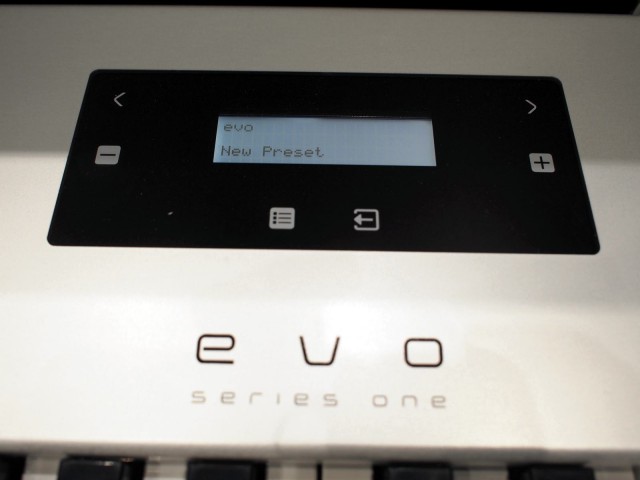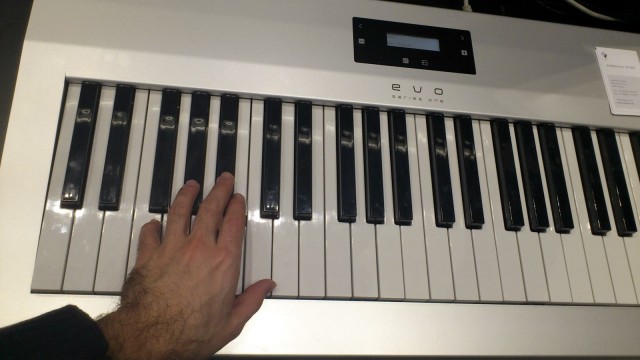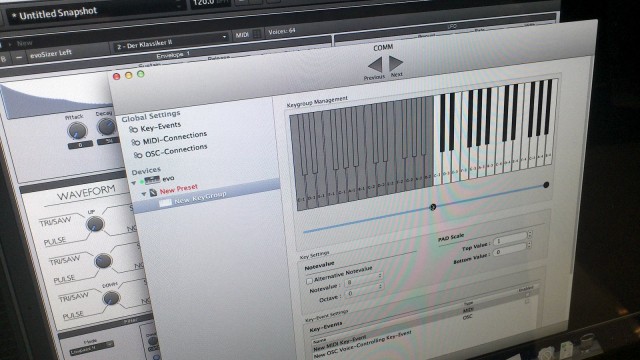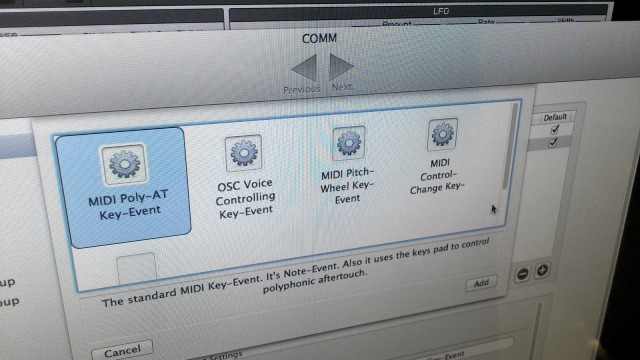Endeavour’s Evo Series One, which we looked at in the fall, does something different with the conventional keyboard: it adds a touch-sensitive surface to the top of the keys, allowing you to run your fingers up and down the keys for added expression. I got a chance to try the Evo today, and I’m impressed. The first feeling is strange: the keys have an action more like an electric keyboard (Rhodes, etc.), and the keys are atypically tall. But as you begin to play, it makes sense: this isn’t a piano for playing Liszt; it’s a unique, hybrid interface. The added length gives you more touch surface to play, and it is possible to get used to a slightly-adjusted playing style without too much effort. In exchange, you get this new dimension of expression – without awkward wiggling motions on the keys or the imprecision of aftertouch.
The Series One has been on sale for a couple of months, but there were a couple of significant revelations today.
First, Endeavour is building their own software. There’s a bridge tool (currently for Mac, with Windows next) that lets you pipe both OSC and MIDI to other programs. That software is free and open source, if you want to do more with it, and you can also get native OSC right out of the keyboard. Endeavour is also building their own, custom synthesizer to take advantage of the added dimension of playability in the input; I saw a Reaktor patch, but it’ll ship as standalone software.
Second, and perhaps most importantly, they’re working on a much more affordable version. The hand-built, unique Series One is a whopping 2700 €, but by the end of the year, we should see something smaller and in a lower price range. (I heard a number I can’t repeat, but that I liked.)
Check out the sound demos at top for a feel of what this can do – and you can see a glimpse of some of the possibilities, as well as the scale of the hardware, in the images below of the device and its editing software.
Previously:
Tactile Touch: Evo Keyboard to Marry Touch Expression, Conventional Keys
Note: my hands aren’t the best way to get scale, as I have relatively small hands. Liszt was always a bit of a stretch.
Updated: Hands-on video from Messe
I shot a quick video for Keyboard Magazine as part of their Musikmesse coverage:
More editing functionality in their videos:
https://vimeo.com/endeavourgmbh/videos




